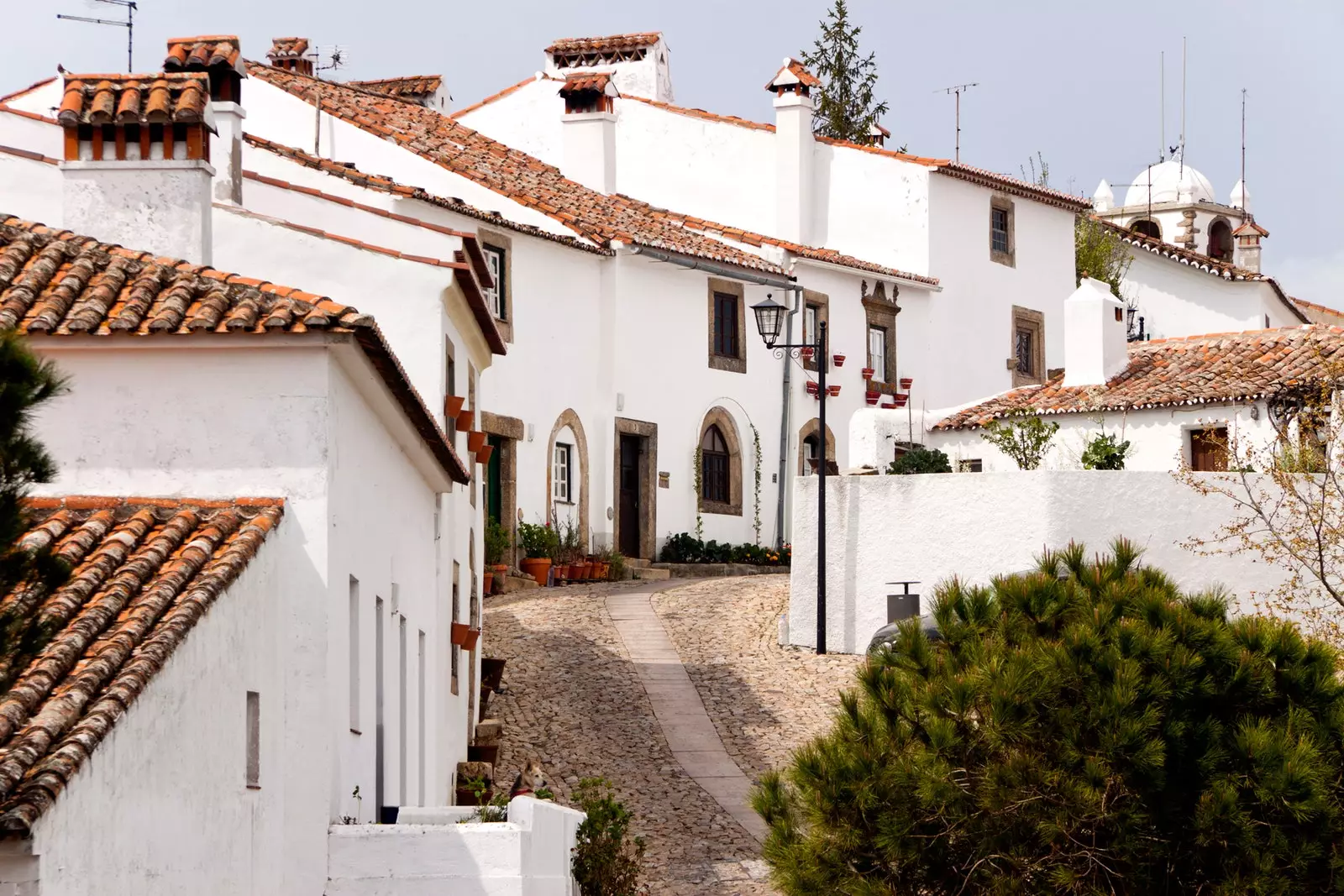
The picturesque town of Marvão
“Oh! They want a better light than the Sun!
They want meadows greener than these!
They want more beautiful flowers than these that I see!
This Sun, these meadows, these flowers make me happy”
Again we turn to Alberto Caeiro created by person to start the second part of our route, this time from the north: the Upper Alentejo.
More famous and more mountainous than the south, We will find in this route the dualities that we already saw in the first part, although with more fame, more details of the Manueline style in its architecture and, especially, one of the essential cities of the country: Evora.
Capital of Alto Alentejo, Évora is a city for walk day and night through its cobbled and clear streets.
It is practically impossible to fail choosing a restaurant to eat, they offer rich examples of Alentejo gastronomy (such as the alentejo pork, The one we already told you about, and which is cooked with clams; the crumbs ; the alentajana açorda –soup– or the cocoa, a fish to vary from the typical bacalhau).
In addition, entering through any of the gates of the Eborense wall you will find small cafes with terraces where to prepare for what awaits you.
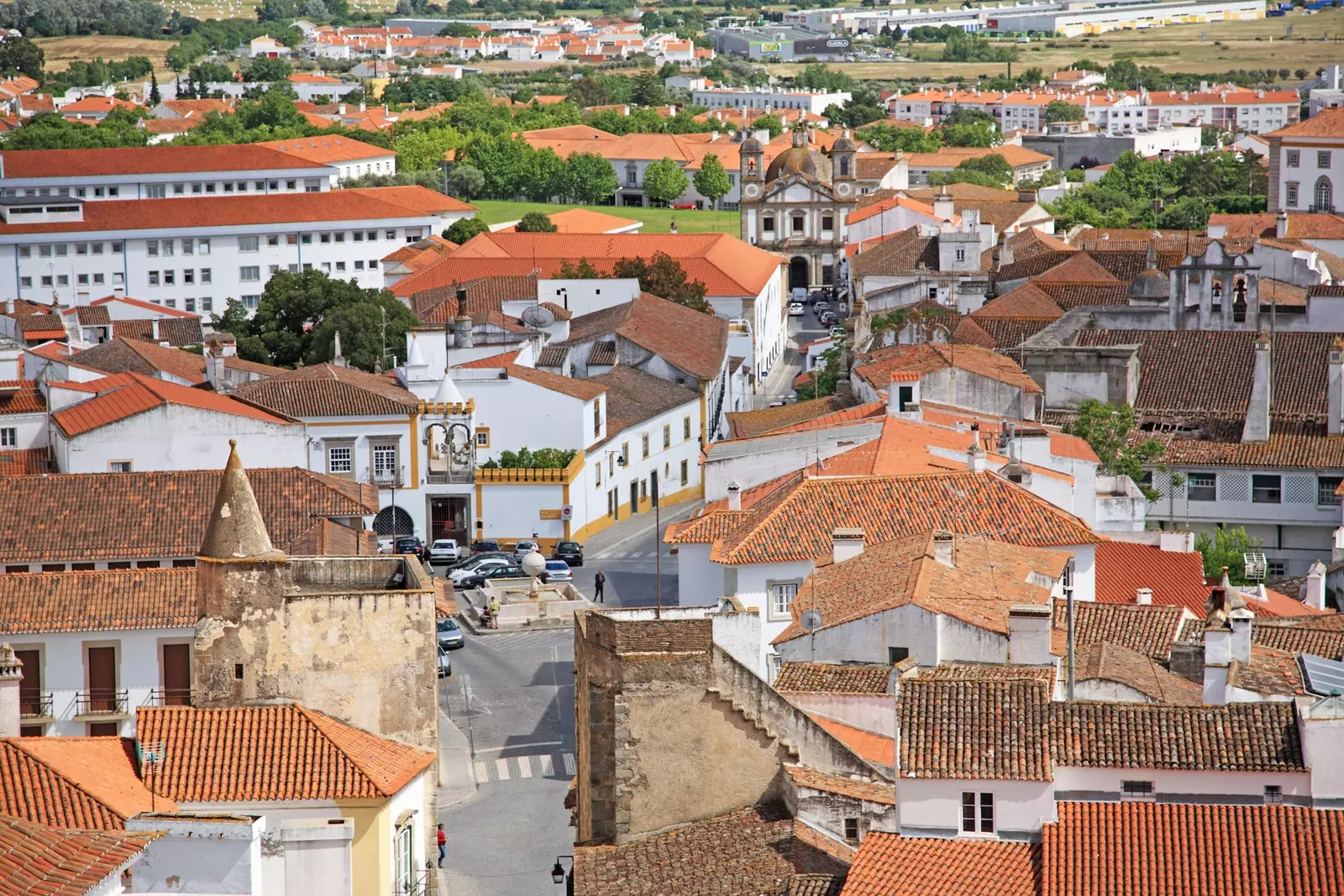
Évora, the capital of Alto Alentejo
The old town of Évora, a city of Celtic origin, has been declared World Heritage Site by UNESCO.
From the Celts we have the original name of Ebura, although the Romans called it Liberalitas Julia/Iulia. We have left of them a temple, that of Diana. The original is from the second century after Christ, although when we are in front of him, José Saramago will tell us from his book that this Temple of Diana, "is not Diana's and never was."
The writer narrates in his trip to Portugal that the temple was destroyed in the 5th century and it was in the 19th century that it recovered its classic appearance. In any case, the columns are made of granite and their capitals, of Corinthian order, are carved in marble from Estremoz.
Évora had good times with the Arabs, but the arrival of the christians hand in hand with the legendary Geraldo Sem Pavor or Sempavor (Geraldo Fearless, in Portuguese), in the 12th century, gave it a cultural golden age.
Évora hosted the royal court between the 15th and 16th centuries and later it was the Inquisition and the Jesuits who took control until the expulsion of the religious order from Portugal by the Marquis of Pombal, in 1759.
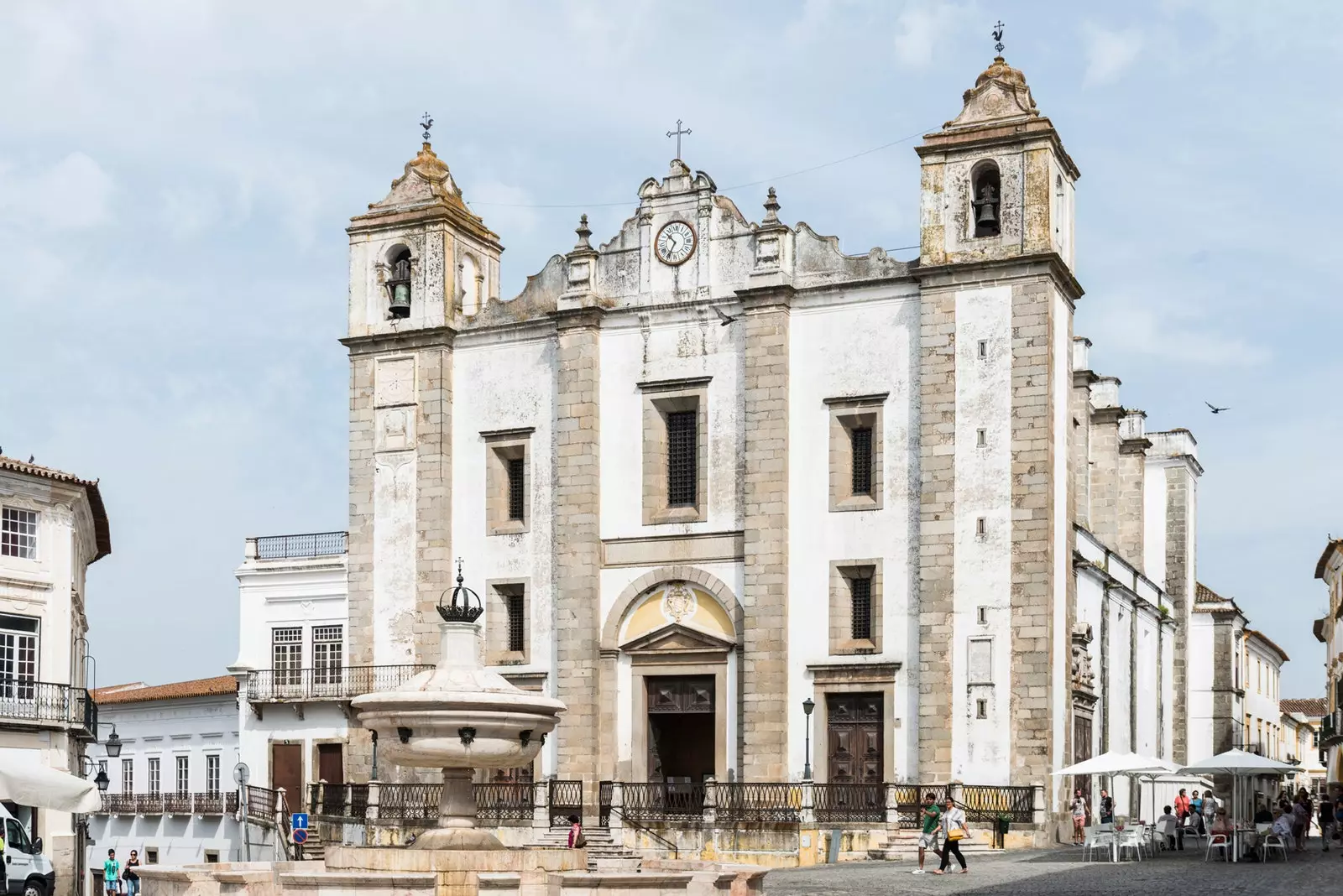
Praça Porticada do Giraldo, with the Church of Santo Antão
The Cathedral It is of Romanesque origin, although it presents many later modifications. One of the streets that leads to it is full of souvenir and craft shops. Do not pass by without going to browse some of them, because you will be surprised by the quality, design and originality of the decoration products they have.
In the Convent of the Loios is the pousada and near the Temple of Diana you can enter the courtyard of the Cadaval Palace or Das Cinco Quinas (of the five corners, it is called that way because of its pentagonal shape), and take the opportunity to relax and have a drink in a pleasant environment.
Another of the typical images of Évora is the praça Giraldo arcade , with its arcades, its church, its fountain and its terraces to rest, eat, drink and observe.
close to pretty grace church, from whose facade two large statues seem to be watching us sitting up there, on the cornice, you will find the famous Capela dos Ossos, inside the Church of San Francisco. The ossos, in Portuguese are… yes, bones. And it is that this chapel is made of skulls, tibias and even mummies.
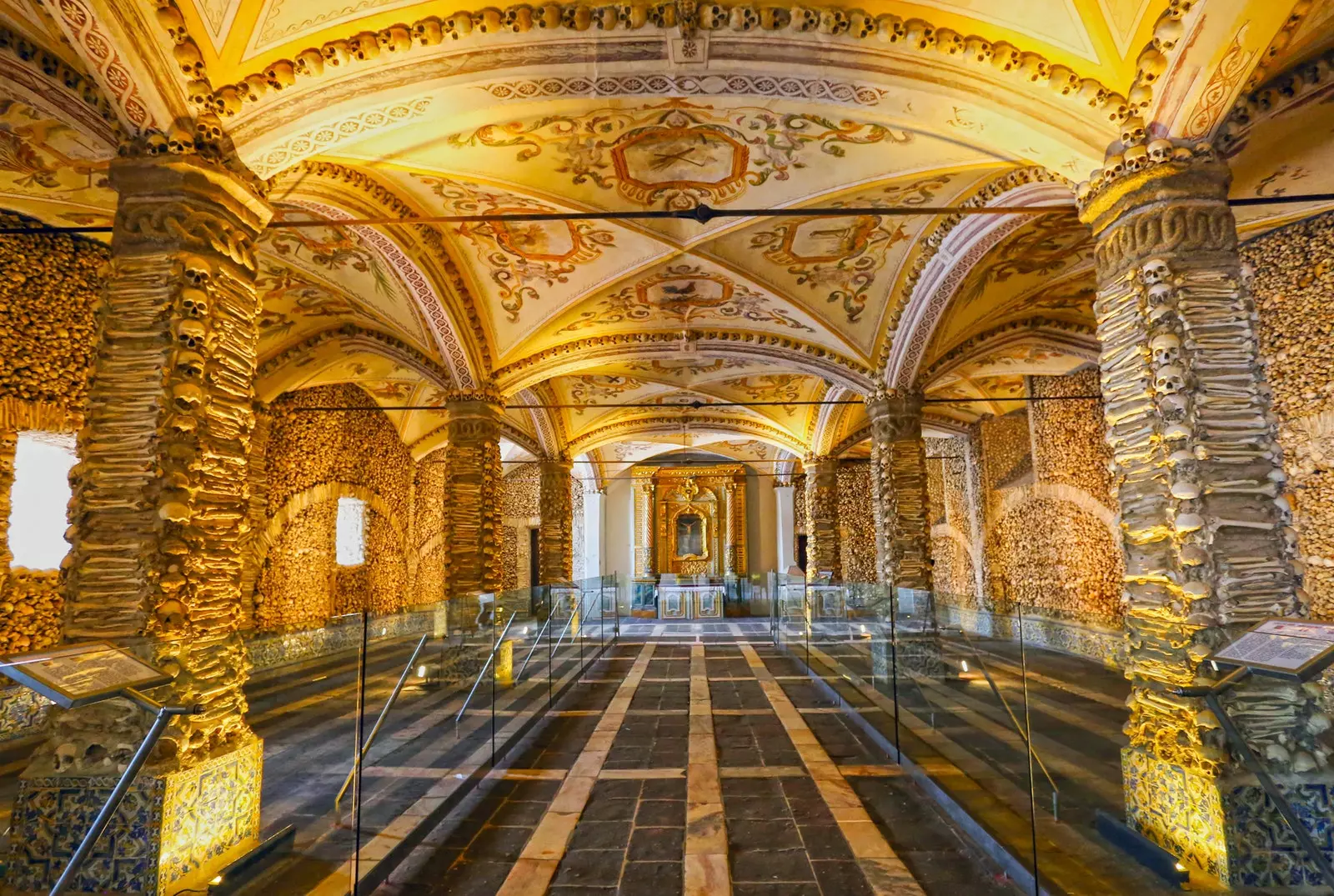
Capela dos Ossos, in the Church of San Francisco
We leave Évora to look for more walls and castles. this time in Montemor-O-Novo, which has an area near the oldest castle and a more modern one in the surroundings.
The castle, conquered the Arabs, served as shelter for the entire population until it overflowed in number of inhabitants and began to occupy the lower part.
Unfortunately, the castle was abandoned and even its stones were used for the construction of new houses. That is why we especially recommend visiting the new part of the city: Many tiles for your social networks, get your phone ready!
To the north of Évora we will come across Arraiolos, place of medieval origin famous for the quality of its rugs and its crafts.
At Traveler we always choose beauty. Therefore, from here we will jump to go up to Marvao, further north, higher, whiter. you can arrive from Spain, via Albuquerque and Valencia de Alcántara, to go around this site on the road of which Saramago said: "From Marvao you can see almost all of the land". Because that's.
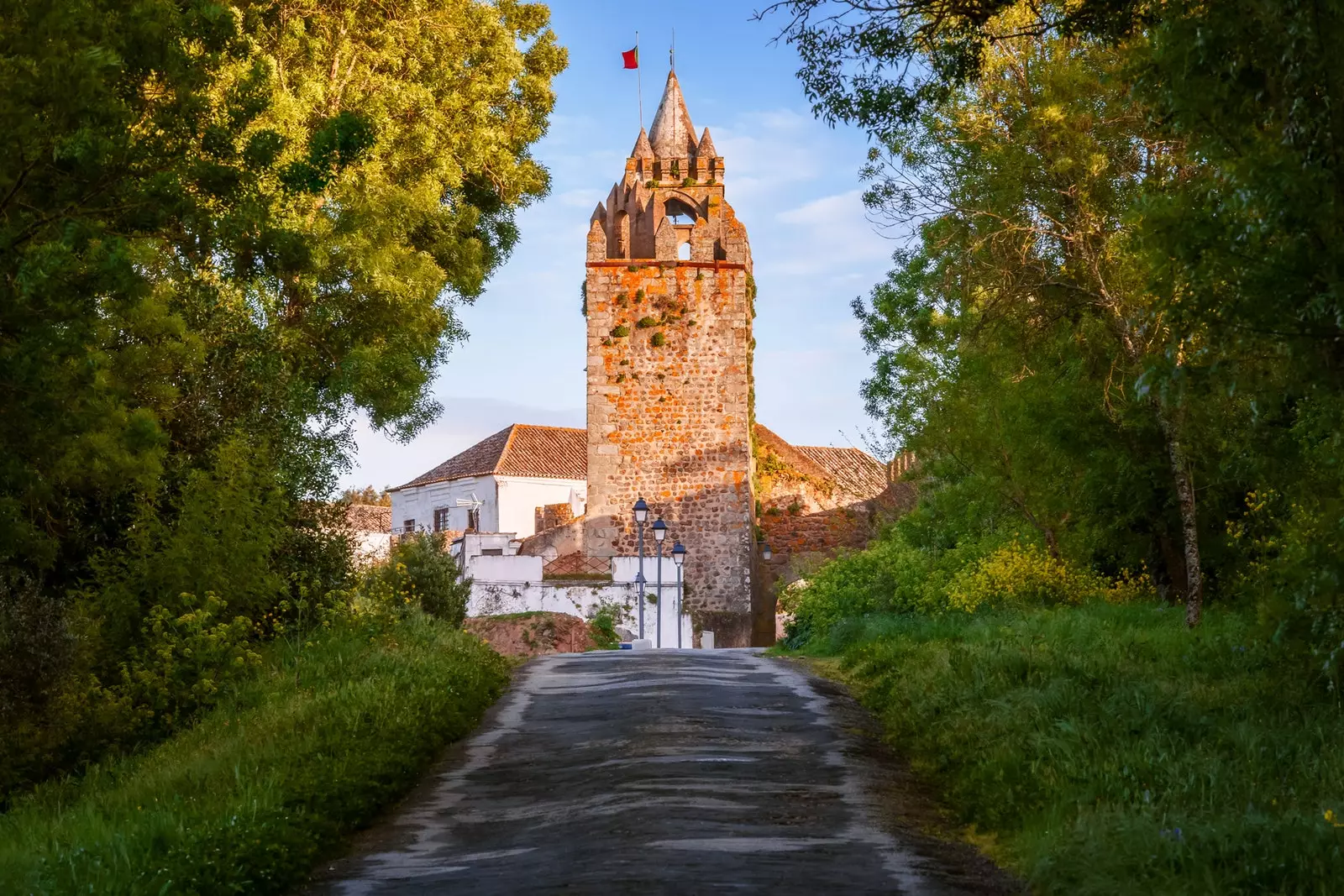
The castle of Montemor-O-Novo, which served as a refuge for the entire population
Sunrise or sunset on its whitewashed walls to the delight of the observer, it has one of the most beautiful castles in the country, that of King Dom Dinis, in whose shop you will find printed several times the phrase that we have just quoted.
In its streets you will find some really curious shops, with crafts, seeds of typical flowers of the region and even Amalia Rodrigues vinyl records.
You can have something in their cafes with terraces almost hidden and yet omnipresent before or after the visit to the castle and the ramparts.
This Ammaia, as the Romans called it, is located in the Serra de Sao Mamede, surrounded by the Natural Park of that name, which includes Arranches, Castelo de Vide and Portalegre besides Marvao.
The current name of the city corresponds to the Sufi Ibn Marwan al-Yil'liqui, known as 'The Galician', according to some sources, that he rebelled against Córdoba and settled in the castle of this town, in addition to founding what was Kingdom of Badajoz against the emirs.
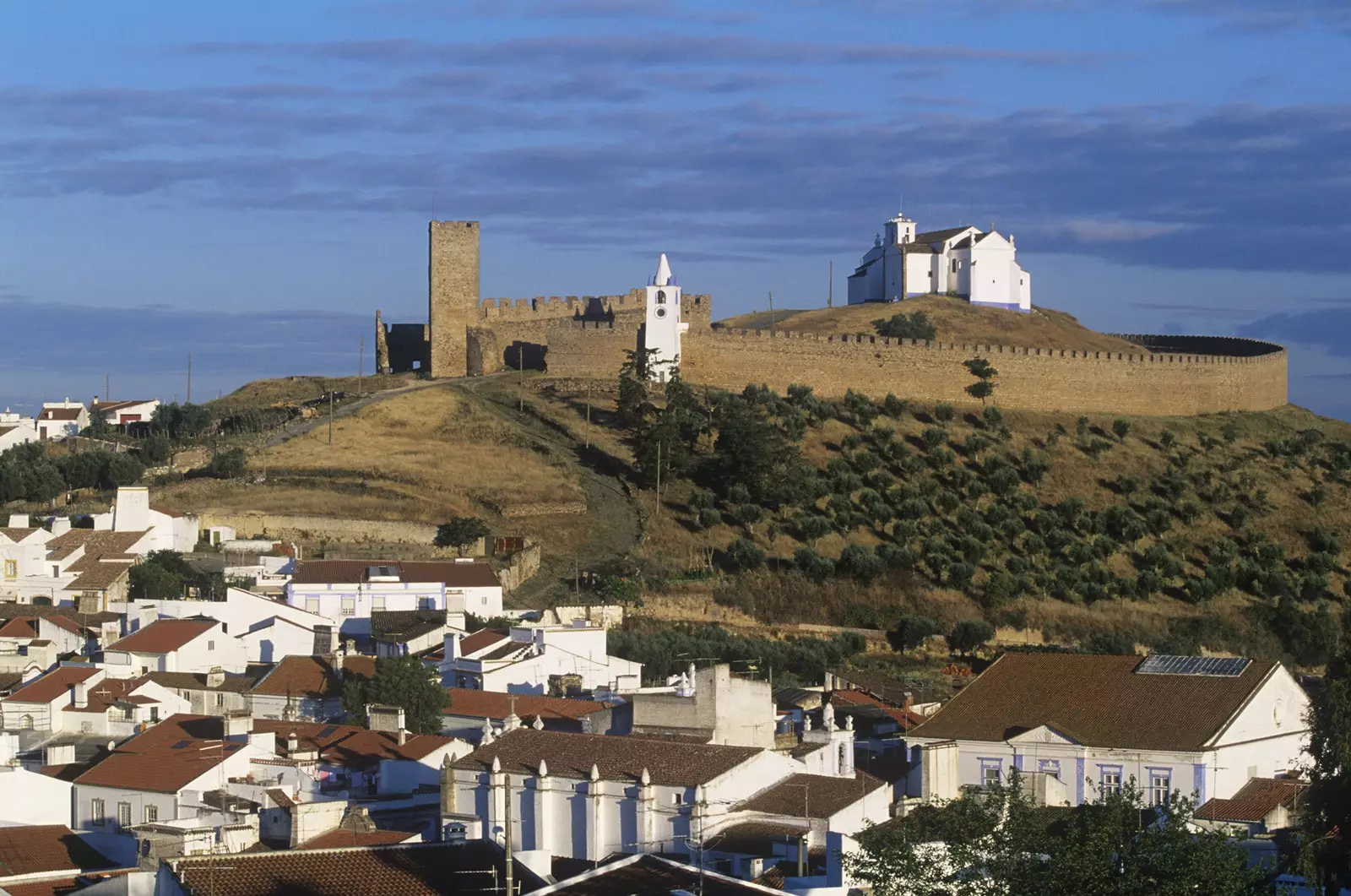
The town of Arraiolos with its imposing castle
Apart from visiting Marvão is heard, seen and tasted… and tastes like chestnuts We explain ourselves better: From the end of June and throughout July (write it down for next year) you can attend one of the Marvao Music Festival concerts, which also organizes common activities framed in this event together with neighboring Valencia de Alcántara.
Also with the town of Extremadura, the ** Film Festival is organized in August,** which exhibits outdoor movies in historic places of La Raya, the Portuguese-Spanish natural border.
If you travel in autumn, take advantage of the gastronomic fortnight dedicated to the chestnut, and on November 10 and 11, the Festa da Castanha takes place, attended by thousands of people.
We leave Marvão behind to go to another important point within this natural park: Castle of Vine. Medieval, thermal, dual: “Castelo de Vide is the Sintra of the Alentejo”, we read in Saramago, which is then corrected: “If Castelo de Vide were another Sintra, it wouldn't be worth coming all the way here”.
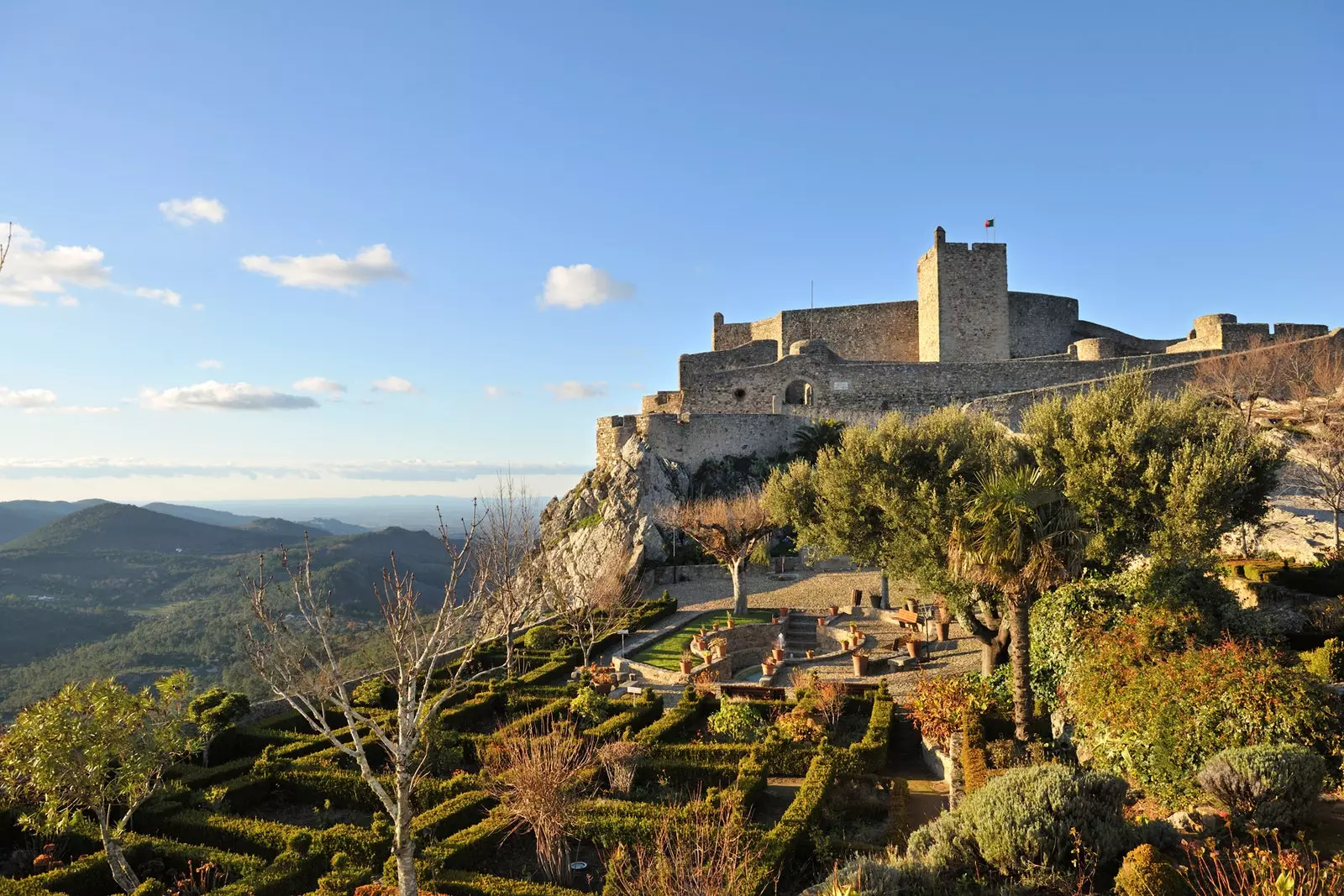
Marvão is heard, seen and tasted…
Why come then? Because we will feel transported to the Middle Ages. The Dom Peter Square presents the most interesting architectural examples, but we encourage you to search again for the chimneys of the houses and the charm of the mansions that placidly observe the tourist.
From the lower part we can go up to the castle through alleys that, sprinkled with manueline style, They take us to the Jewish quarter.
Leave some curiosity for the Fonte da Vila, a Renaissance washhouse of which Saramago lamented its state in Viaje a Portugal, to advise: “If there is mercy, take care of these stones, they well deserve it”.
And don't worry, don't worry, José, because it's still there, careful, we don't know if it's mercy or tourism. Before you leave go to one of the viewpoints that this elevated locality offers on the plains that surround it.
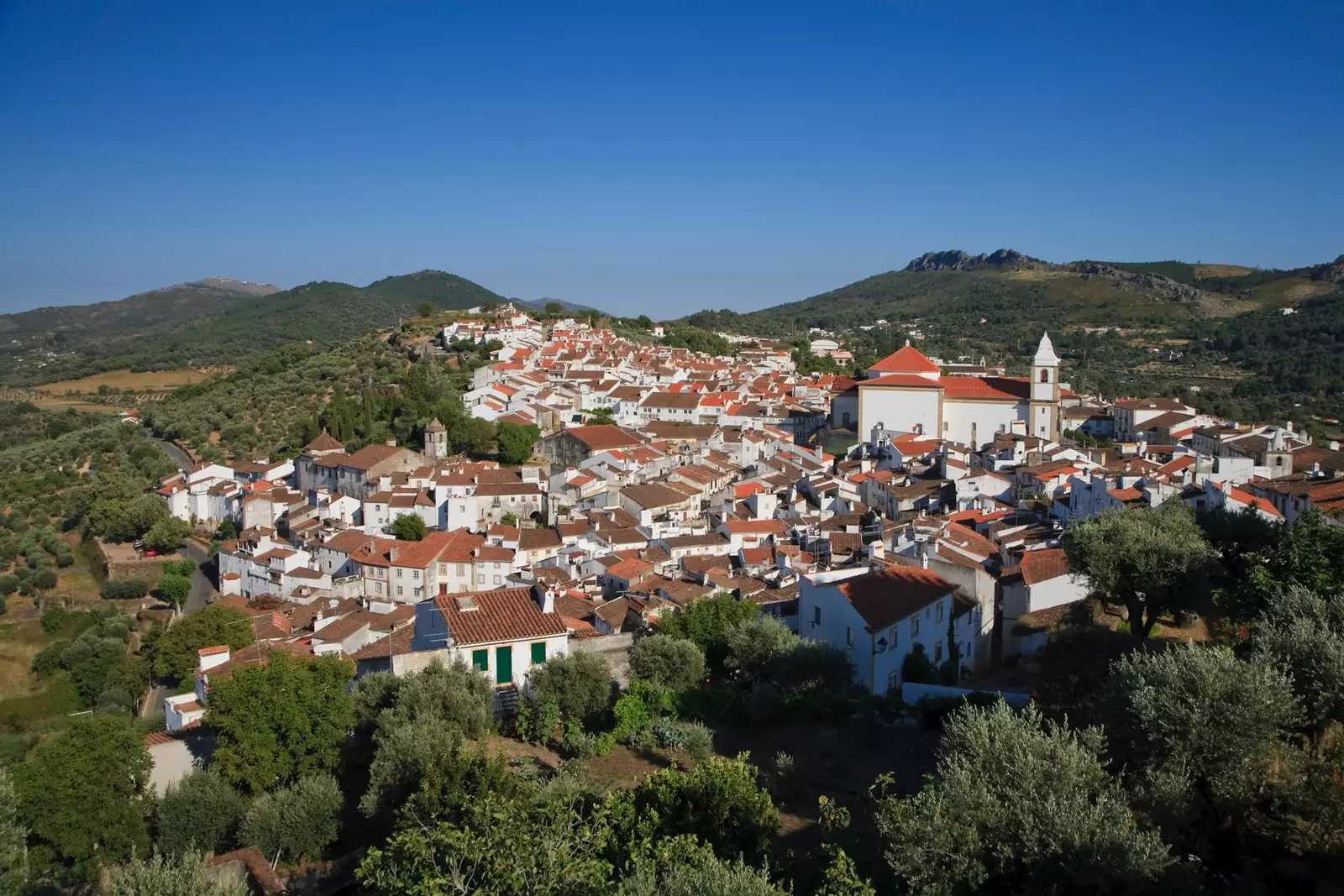
Castelo de Vide, with the Serra de Sao Mamede in the background
Birthplace of the poet José Regio, Portalegre will bring us again the hustle and bustle, the shops and the turmoil from a city somewhat larger than Marvão or Castelo de Vide.
Saramago cites Regio in his verses, in Portuguese: "Em Portalegre, cidade Do Alto Alentejo, cercada de Serras, ventos, penhascos, oliveiras e sobreiros" ("In Portalegre, city of Alto Alentejo, surrounded by Sierras, winds, rocks, olive trees and cork oaks") -
Portalegre is surrounded, in addition to everything Regio said, by picturesque roads, worthy of being shot for films of the road trip type. However, the city had its best period in the century XVI thanks to tapestries and silk that they manufactured
In the intramural part we find its narrow alleys, little shops and bars with modern touches, while the part outside the walls is where the textile factories.
To speak again in double terms, we go to the compound name of Vila Vicosa and its history and heritage. One of the classic white cities of the Alentejo, it was official residence of the Dukes of Bragança before they came to the Portuguese throne, and some kings also lived there.
Nostalgic airs of nobility remain from these times, although some of the events that occurred in the Ducal Palace they are not exactly noble: ordered to be built by Duke Dom Jaime, his wife died here, assassinated by him, after being accused of adultery.
Apart from the castle, we highlight the Terreiro do Paco and the Porta dos Nos (Gate of the Knots) of Manueline style.
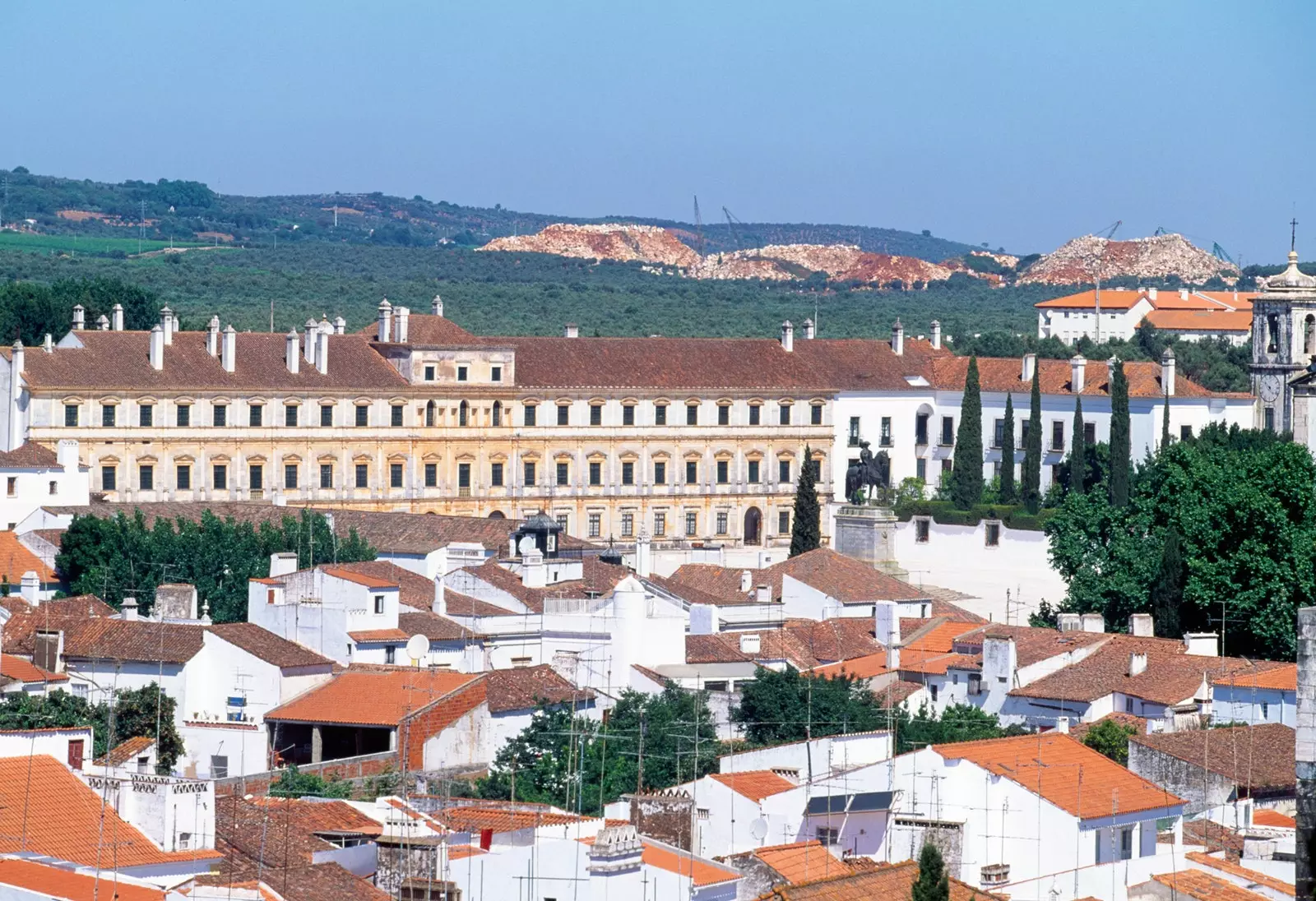
The Ducal Palace of Vila Viçosa
From here we go to Estremoz, with a short stop at borba to taste your came and visit a town famous for its marbles (same as Estremoz) and that has a walled area inside which we will find churches and convents.
You see? Again visits in conjunction. Estremoz, surrounded by quarries to extract marble, climbs to the top of a hill next to the Sierra de Ossa to tell us about your visit In intramural and extramural terms: the upper part, inside the wall, with narrow streets and manueline and gothic details and a Torre del Homenaje; and the lower part, which has a walled enclosure of monumental entrances.
In the Pombal or Rossio Square, As it is known more, you can have a coffee or a snack watching the wandering and listening to the talks of the countrymen. If you like outdoor markets, go on a Saturday.
We almost finished our visit to the region beyond the Tagus (because this is what Alentejo means, alem do Tejo, but we still have one strong point left: Elvas.
Near Badajoz, it was for years textile pilgrimage site: come on, that many Spaniards crossed the border to buy towels in this small city to which, otherwise, we did not pay much attention.
Big mistake. Elvas welcomes us with the amoreira aqueduct, one of his typical images. Built between the 16th and 17th centuries, it stretches for eight kilometers and has more than 800 arches (843, Saramago tells us). The Wall, Built in the 18th century, it is a very beautiful example of Portuguese military architecture.
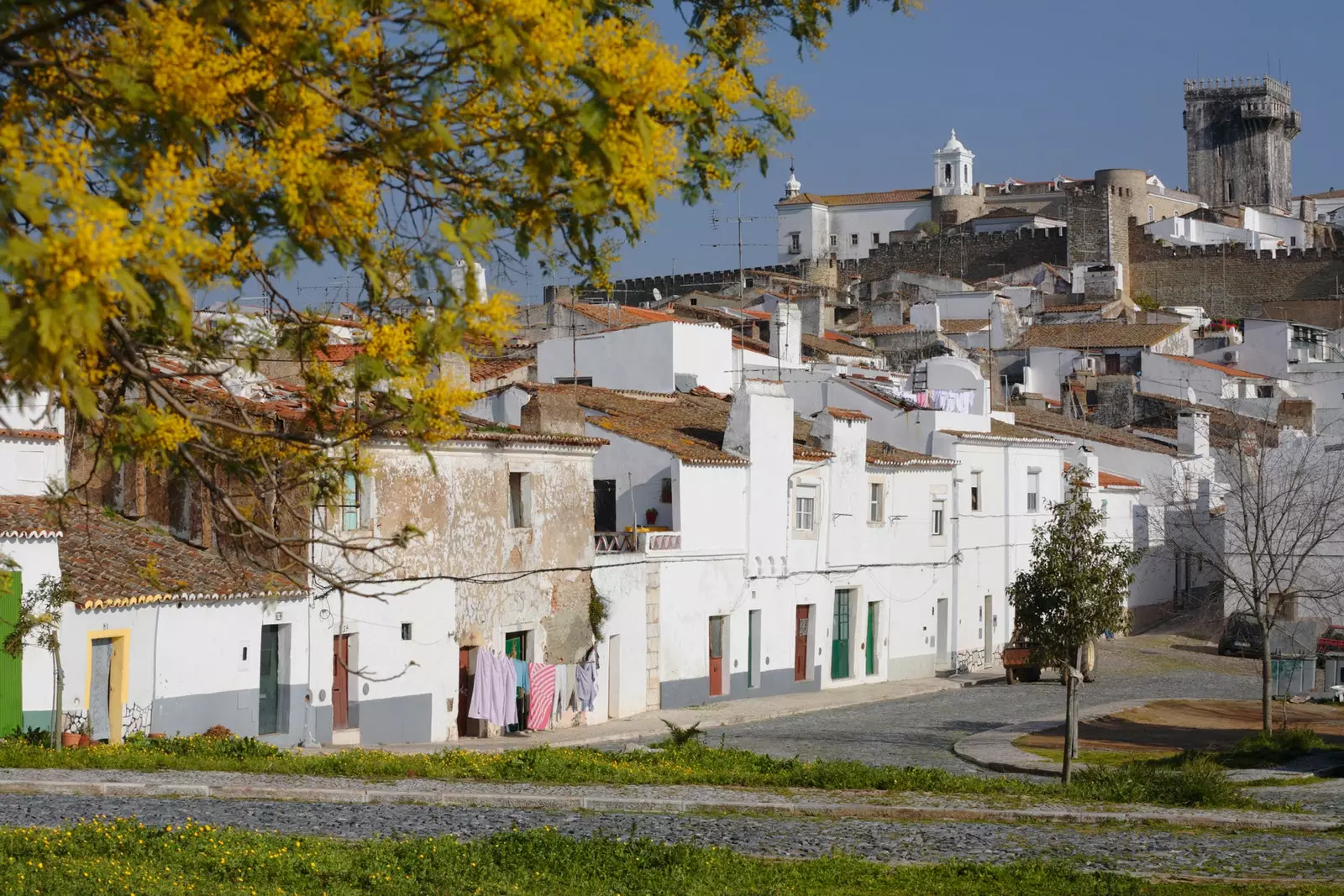
Estremoz: narrow streets in the upper part and monumental entrances in the lower part
Its buildings inside, with many tiles in some cases and quite abandoned in others, bring us whispers, which somehow invite us to discover what a curious clothing store (Miss Quiquinhas) or how baroque restaurant-bar hiden (It happens, go up to the terrace on the roof shortly before sunset) .
In the Praça 25 de avril you find the Fountain of Mercy and some very nice terraces especially at night, full of life. Nearby is the Cadeira Street, one of the most commercial in the town.
We encourage you to go up and down its streets and discover unexpected squares and secluded restaurants, such as the Regional Adega.
If you want to get carried away by the most famous, go to the ** Pousada de Santa Luzia. ** And if you prefer to leave the historic center, on the road to Badajoz you will find several restaurants and seafood restaurants that are worth a stop along the way.
And how strange is the route, almost as if we had really done it sitting on a typical Alentejo rug, we let ourselves fall a little until Juromenha, locality next to the Guadiana coveted by Spanish and Portuguese in history.
Small, discreet, we go with the most illustrious guide we could find, the Nobel Prize for Literature José Saramago:
“All trips have an end and Juromenha would not be a bad place to end this one”
Done, master.
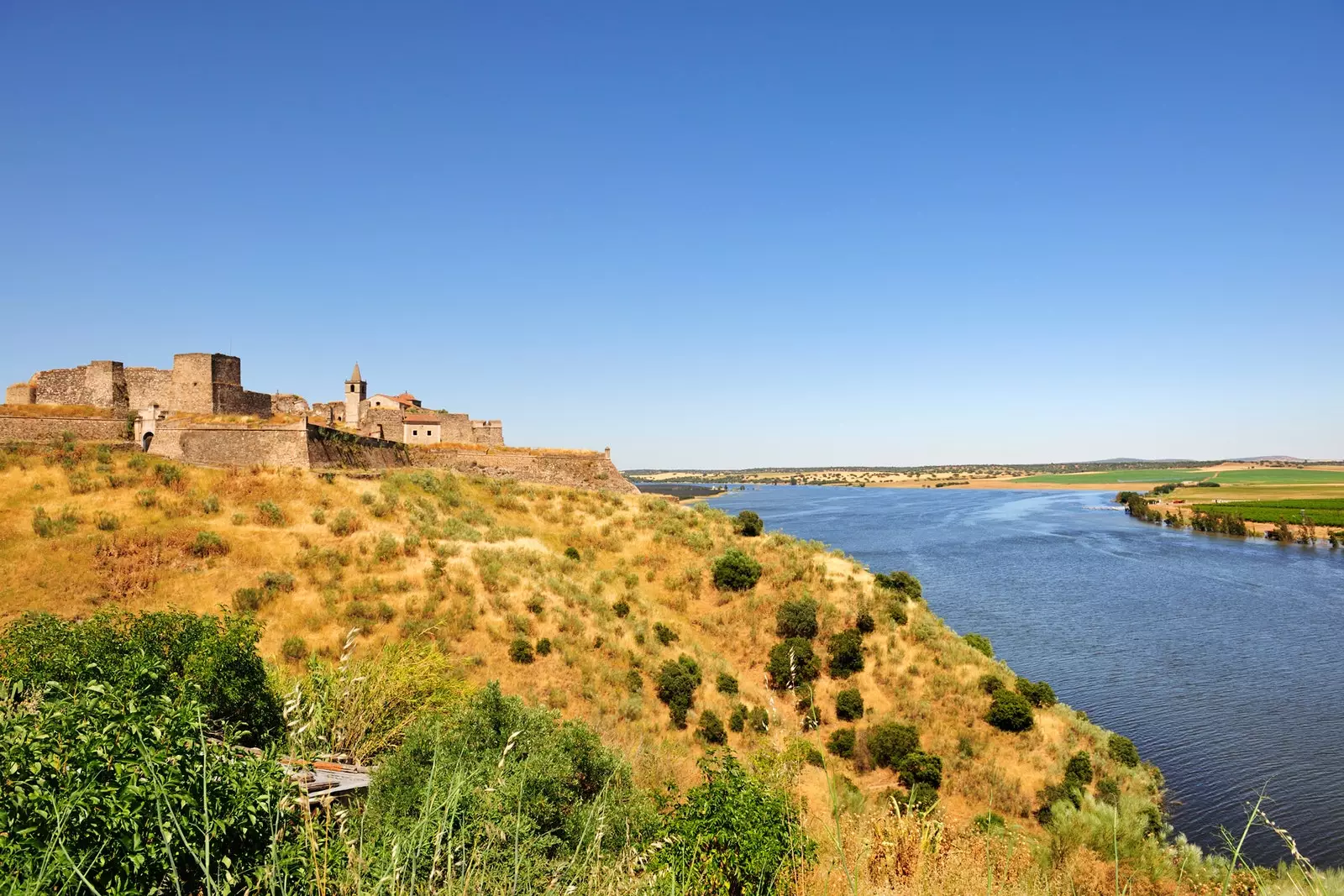
Juromenha, with the Guadiana at his feet
